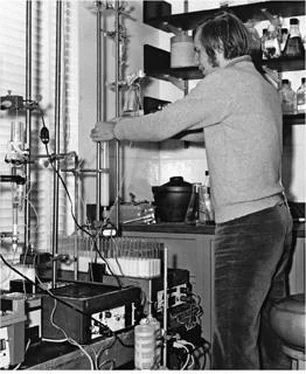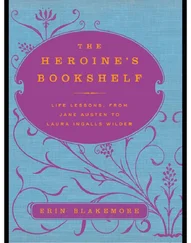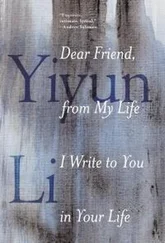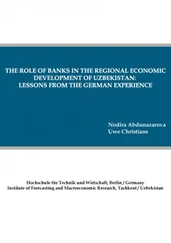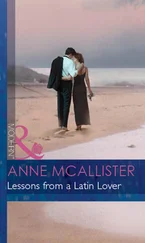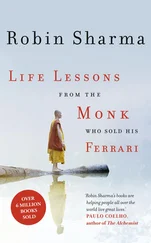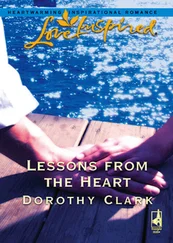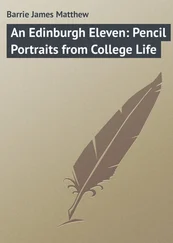James Watson - AVOID BORING PEOPLE - Lessons from a Life in Science
Здесь есть возможность читать онлайн «James Watson - AVOID BORING PEOPLE - Lessons from a Life in Science» весь текст электронной книги совершенно бесплатно (целиком полную версию без сокращений). В некоторых случаях можно слушать аудио, скачать через торрент в формате fb2 и присутствует краткое содержание. Жанр: Биографии и Мемуары. Описание произведения, (предисловие) а так же отзывы посетителей доступны на портале библиотеки ЛибКат.
- Название:AVOID BORING PEOPLE: Lessons from a Life in Science
- Автор:
- Жанр:
- Год:неизвестен
- ISBN:нет данных
- Рейтинг книги:5 / 5. Голосов: 1
-
Избранное:Добавить в избранное
- Отзывы:
-
Ваша оценка:
- 100
- 1
- 2
- 3
- 4
- 5
AVOID BORING PEOPLE: Lessons from a Life in Science: краткое содержание, описание и аннотация
Предлагаем к чтению аннотацию, описание, краткое содержание или предисловие (зависит от того, что написал сам автор книги «AVOID BORING PEOPLE: Lessons from a Life in Science»). Если вы не нашли необходимую информацию о книге — напишите в комментариях, мы постараемся отыскать её.
AVOID BORING PEOPLE: Lessons from a Life in Science — читать онлайн бесплатно полную книгу (весь текст) целиком
Ниже представлен текст книги, разбитый по страницам. Система сохранения места последней прочитанной страницы, позволяет с удобством читать онлайн бесплатно книгу «AVOID BORING PEOPLE: Lessons from a Life in Science», без необходимости каждый раз заново искать на чём Вы остановились. Поставьте закладку, и сможете в любой момент перейти на страницу, на которой закончили чтение.
Интервал:
Закладка:
Francis learned of DNA's monoclinic space group only through reading a nonconfidential King's progress report sent to Max Perutz in mid-February. By then, through a new burst of model building, I
had found that a sugar-phosphate backbone of 20 Ä diameter optimally repeats every 34 Ä, the repeat distance measured in B-form DNA. Francis now argued, in light of Rosalind's space group, that the two chains must run in opposite directions. But I didn't initially buy this assertion, not understanding the underlying crystallographic symmetry argument. Until I knew how the centrally located bases bonded to each other, I didn't want to worry about backbone directions. Then, unknown to me, my model building was being hindered by faulty textbook descriptions for the structures of guanine and thymine. Using such false configurations, I had become momentarily excited about a pairing scheme similar to that found in crystals of adenine.That scheme, however, would have given a 17 Ä repeat along the helical axis, not the 34 Ä figure observed by Rosalind. Happily, the Cal-tech structural chemist Jerry Donohue, then spending his sabbatical year in Cambridge, set me on the right track by arguing that the guanine and thymine hydrogens should have keto rather than the textbook-ascribed enol configurations. Needing only a day to incorporate Jerry's reasoning, I changed the locations of the hydrogen atoms on my paper-cutout models of thymine and guanine. Almost instantly I found myself forming the A-T and G-C base pairs we now know to exist in DNA. Coming a half hour later into our office that Saturday morning, Francis took only a few minutes to conclude that symmetry of the base pairs demanded that the chains run in opposite directions. Rosalind's monoclinic space group was in a true sense a prediction of a model derived by Francis and me from purely stereochemical arguments. The double helix had to be correct. All that remained to be done was to build a backbone segment and measure its atomic coordinates to show that all the bond lengths and angles in our model agreed with those previously found in smaller molecules. This task, which for the first time in months took Francis away from his desk, took less than three days to complete. The double helix was ready to be let loose upon the world.
Breaking the news to Wilkins that we very likely had solved the DNA structure was bound to cause his heart to spasm. A day after we
had verified appropriate coordinates for all the atoms, a letter from him arrived informing Francis that Rosalind was out of King's and that Maurice was about to resume work on DNA. Perhaps to soften the blow, John Kendrew, not Francis, called Maurice to report that Francis and I had a promising novel structure for DNA. Coming up the next day, Maurice instantly recognized the double helices’ elegant simplicity and agreed that it was likely too good not to be true. Aware that we would not have found the DNA structure without knowledge of X-ray results from King's, Francis and I suggested to Maurice that his name also be on the manuscript we planned to send to Nature. Without hesitation he declined, possibly not knowing how to deal with Rosalind Franklin and Raymond Gosling's equally important contributions. The April 25,1953, issue of Nature, besides containing the nine-hundred-word description of our model, included separate continuing contributions from the two warring DNA groups at King's. Maurice was later to write that his refusal to publish jointly with the two of us was the biggest mistake of his life.
Francis and I posing with our morning coffee in our office, just after the publication of our manuscript inibiture

Excerpt from the diary of Gerard Roland Pomerat, of the Rockefeller Foundation, describing his visit to the Cavendish Lab, dated Aprili, 1953
In every sense solving the double helix was a problem in chemistry. Alex Todd facetiously told me that Francis and I were good organic chemists, not wanting to admit that a major objective in chemistry had been solved by nonchemists. In reality, Francis and I would not have been first to see the structure if Todd's fellow chemists had not done botched jobs. Linus had all the keys to unlock the DNA structure
but inexplicably didn't use them that fall of 1952. Rosalind Franklin would have seen the double helix first had she seen fit to enter the model-building race and been better able to interact with other scientists. If she had accepted rather than rejected Maurice as a collaborator, the two of them could not have failed to realize the significance of the monoclinic space group. Dorothy Hodgkin's Oxford put-down of Rosalind as a crystallographer would then not have been the fatal wound that in retrospect it now seems.In contrast, Francis and I were far from being on our own. One flight up was the clever Bill Cochran, who put the Bessel functions of helical diffraction theory into Francis's working vocabulary, whence they entered mine. Even more important, Jerry Donohue's spartan desk was no more than twelve feet from mine and Francis's when his quantum chemistry expertise squelched my initial desire to build a double helix based on like-with-like base pairing (e.g., A-A and T-T). The Cavendish was then a magnet for minds that wanted to be challenged by others of equal power. In contrast, Linus Pauling's Caltech was a chemistry garden of mortals hovered over by a god who saw no need to assimilate the ideas and facts of others. If Linus had only spent a few days in Caltech's libraries perusing the literature on DNA that fall, he would most likely had to have hit upon the idea of base pairing and would now be celebrated for both the a-helix and the double helix.
Virtually everyone who came to our now even more cramped Cavendish office to see the large 3-D model made in early April was thrilled by its implications. Any doubt as to whether DNA and not protein was the genetic-information-bearing molecule suddenly vanished. The complementary nature of the base sequences on the opposing chains of the double helix had to be the physical counterpart of the Pauling-Delbrück theoretical postulation of gene copying through the creation of complementary intermediates. DNA double helices as they exist in nature must reflect single-stranded template chains hydrogen-bonded to their single-stranded products of complementary sequence. Two of the three big questions in molecular genetics, what is the structure of DNA and how is it copied, were suddenly resolved through the discovery of base-pair hydrogen bonding.
Still to be ascertained was how the information conveyed by the sequence of DNA's four bases (adenine, guanine, thymine, and cyto-sine) determines the order of the amino acids in the polypeptide products of individual genes. Since there were known to be twenty amino acids and only four DNA bases, groups of several bases must be used to specify, or code for, a single amino acid. I initially thought the language of DNA then would be best approached not through further work on the DNA structure but by work on the 3-D structure of its close chemical relative ribonucleic acid (RNA). My decision to move on from DNA to RNA reflected the observation, already several years old, that polypeptide (protein) chains are not assembled on DNA-containing chromosomes. Instead they are made in the cytoplasm on small RNA-containing particles called ribosomes. Even before we found the double helix, I postulated that the genetic information of DNA must be passed on to RNA chains of complementary sequences, which in turn function as the direct templates for polypeptide synthesis. Naively I then believed that amino acids bonded to specific cavities linearly located on the surfaces of the ribosome RNA components.Three subsequent years of X-ray studies—the first two at Caltech and the last back with the “Unit” in Cambridge, England, in which I was joined by the Pauling- and Harvard Medical School-trained Alex Rich—frustratingly failed to generate a plausible 3-D structure for RNA. Though RNA from many different sources produced the same general X-ray diffraction pattern, the pattern's diffuse nature gave no solid clues as to whether the underlying RNA structure contained one or two chains. By early 1956 I decided to change my focus from X-ray studies on RNA to biochemical investigations on ribosomes when I began teaching in the fall at Harvard. Also then seeking a more tractable challenge was the Swiss-born biochemist Alfred Tissières, then studying oxidative metabolism at the Molteno Institute in Cambridge. He had already briefly dabbled with ribosomes from bacteria and liked the idea of our seeking out how they work across the Atlantic in the other Cambridge.
Читать дальшеИнтервал:
Закладка:
Похожие книги на «AVOID BORING PEOPLE: Lessons from a Life in Science»
Представляем Вашему вниманию похожие книги на «AVOID BORING PEOPLE: Lessons from a Life in Science» списком для выбора. Мы отобрали схожую по названию и смыслу литературу в надежде предоставить читателям больше вариантов отыскать новые, интересные, ещё непрочитанные произведения.
Обсуждение, отзывы о книге «AVOID BORING PEOPLE: Lessons from a Life in Science» и просто собственные мнения читателей. Оставьте ваши комментарии, напишите, что Вы думаете о произведении, его смысле или главных героях. Укажите что конкретно понравилось, а что нет, и почему Вы так считаете.
